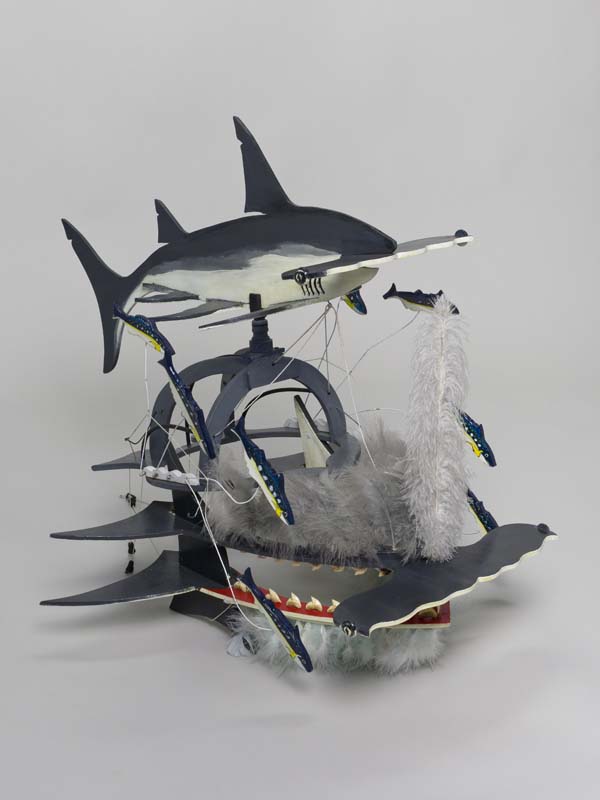We acknowledge the Traditional Owners of the land on which the Queensland Art Gallery | Gallery of Modern Art stands and recognise the creative contribution First Australians make to the art and culture of this country.

Ken Thaiday Sr / Meriam Mir people / Australia b.1950 / Beizam headdress (Shark with bait fish) 1995 / Plywood, enamel paint, wire, feathers, shark’s teeth, string / 72 x 90.5 x 67.8cm (irreg.) / Purchased 1995. Queensland Art Gallery Foundation / Collection: Queensland Art Gallery | Gallery of Modern Art / © Ken Thaiday Sr
Ken Thaiday SrBeizam headdress (Shark with bait fish) 1995
Not Currently on Display
In Beizam headdress (Shark with bait fish) Ken Thaiday Sr has used real shark’s teeth to emphasise the power of beizam’s ferocious jaws; in more recent versions he substitutes zig zag strips cut from plastic containers for teeth.
In the 1980s Thaiday was recognised as an innovative performer and a leader in the creation of Torres Strait dance objects when he formed a troupe to perform at ‘tombstone opening’ ceremonies and community cultural events in North Queensland. Making articulated headdresses then became a powerful form of artistic expression for him and his works were collected by art museums and for private collections.
Though Thaiday now uses materials such as plywood, wire and garden hardware to provide the dancer with lighter, more flexible adornments, his headdresses retain all their original menace and drama and remain powerful cultural objects.
Ken Thaiday Sr was born in 1950 on Erub (Darnley Island) in the outer Torres Strait, one of Australia’s most remote communities. Thaiday spent his childhood with his family, fishing and gardening, and participating in ceremonial life. When he was about 13, the family moved to Waiben (Thursday Island) where he attended school, and two years later they settled in Cairns.
Thaiday first worked for the railways, then as a labourer and later as a leading hand (a supervisor on a construction site). Though Thaiday now lives and works with his family in Cairns, the celebration of his island culture remains an important aspect of his life.
In the 1980s, Ken Thaiday became a leader in the creation of Torres Strait dance objects when he formed a dance troupe to perform at traditional tombstone ceremonies in north Queensland. While spectacular headdresses have become his best-known works, he also creates dance weapons, zamiyakal (articulated dance machines), paddles and musical instruments. His artworks are based on the rich history and narratives of the Torres Strait Islands.